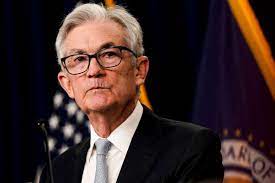
The annual Jackson Hole gathering closed with what may well prove to be Jerome Powell’s last major act before the September meeting — and while he resisted committing to a cut, the stage remains set for one, predicts global financial advisory giant, deVere Group.
The Federal Reserve Chair stressed caution, flagging that key jobs and inflation data are still to come before the mid-September decision. But despite the hesitancy, investors are right to expect that a rate cut is near.
Nigel Green, chief executive of deVere Group, says: “Powell did what central bankers do best at Jackson Hole — he kept the door open.
“The fact remains, we believe, that the Fed is already behind the curve, and the balance of risks is shifting toward easing sooner rather than later.”
The Fed has not reduced rates since December, but cracks in the economy are becoming more visible. Growth is softening, the labour market is showing signs of strain, and tariffs imposed by President Donald Trump are feeding price pressures across supply chains.
Nigel Green continues: “The irony is that Trump’s tariff push, designed to project strength, is one of the biggest inflationary forces in the economy right now.
“Rate cuts may not solve the tariff problem, but they can keep credit flowing and prevent an avoidable downturn.”
The calendar matters. On the first Friday of September, the latest jobs report will test whether hiring momentum can reassert itself.
The following week, consumer and producer price reports will show whether July’s unexpectedly hot wholesale prices were a blip or the start of a sticky trend. Markets are already on edge: the dollar has whipsawed, Treasury yields are sliding, and risk-sensitive currencies from the Australian dollar to the Korean won are reacting to every hint of Fed recalibration.
“Powell knows the cost of inaction is rising,” notes the deVere CEO.
“If the jobs data are weak, or if inflation shows signs of rolling over, he’ll have all the cover he needs to move. Waiting longer risks tightening financial conditions even further — markets are not patient forever.”
Historically, Jackson Hole has marked turning points in Fed communication. It was here in 2010 that Ben Bernanke hinted at quantitative easing, setting the stage for years of ultra-loose policy.
In 2022, Powell first articulated “higher for longer.” This year, the message was more guarded, but the subtext is unmistakable: the Fed is preparing markets for change.
The potential beneficiaries of lower rates are already clear.
Tech and AI companies, with heavy investment pipelines, would find capital cheaper. Real estate investment trusts and utilities, which thrive when bond yields fall, could see demand surge. Small-cap stocks, often reliant on borrowing, would gain easier access to credit.
“The winners from lower rates are not theoretical,” Nigel Green explains.
“They’re the companies that will drive the next cycle of growth. Investors who position early will capture the upside before it becomes consensus.”
At the same time, the broader economy is caught in a divergence. High-income households continue to spend, but middle- and lower-income consumers are feeling the squeeze. Earnings season has laid bare this split.
This dynamic is precisely why a rate cut is becoming necessary — to ensure that the weakest parts of the economy do not drag the rest into contraction.
“The Fed cannot target tariffs, but it can target confidence,” Nigel Green notes.
“A cut in September would reassure households and businesses that the central bank is not asleep at the wheel. Delaying only raises the odds of a harder landing.”
For Powell, the decision is not whether to cut, but when. At Jackson Hole, he signaled he is watching the data, but history suggests the data will point toward easing.
With global peers from the European Central Bank to the Bank of England already recalibrating policy stances, the Fed risks isolation if it holds back.
“The window for action is now,” says Nigel Green. “We expect a cut in September. It’s not yet rubber-stamped, but the logic is overwhelming. If Powell waits for perfect conditions, the Fed will end up chasing events instead of shaping them.”

